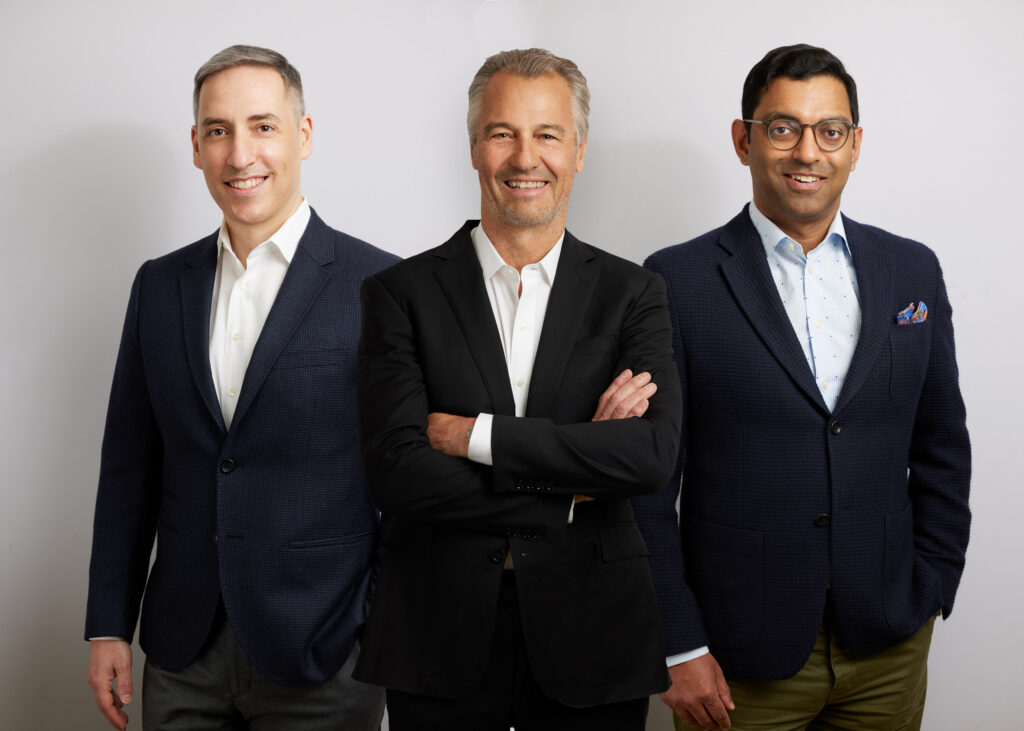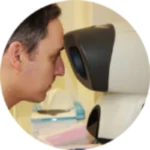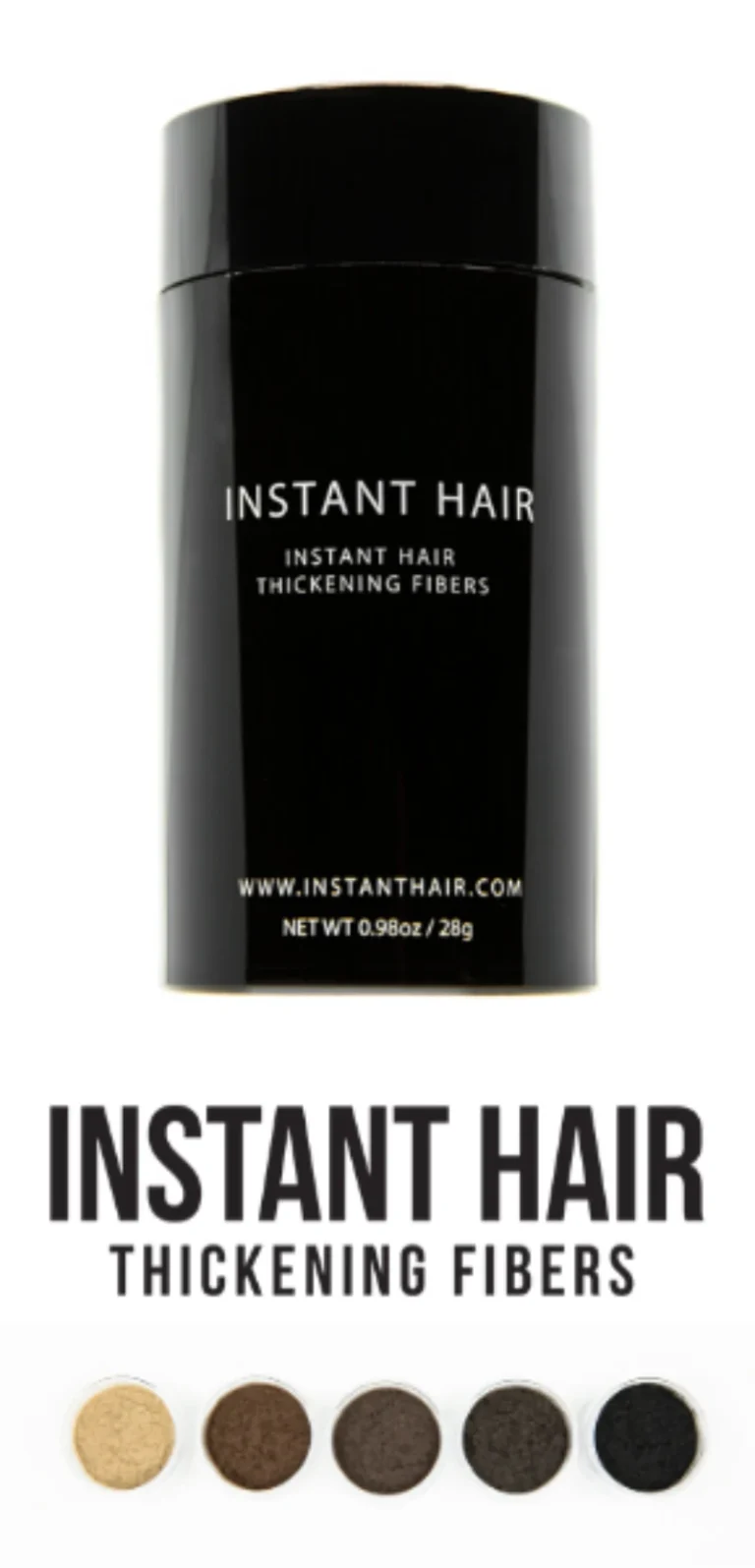Beard Transplant in Toronto
Facial hair has always been a symbol of masculinity and style. However, not all men are blessed with a full and thick beard. This has led to the increasing popularity of beard transplants among men in their 20s and 30s who want to enhance their appearance. In this ultimate guide, we will explore everything you need to know about beard transplants, from the procedure to the expected results and aftercare.
Our clinic specializes in hair transplant in Toronto, offering advanced solutions for both scalp and facial hair restoration. With experienced surgeons and tailored treatments, we provide effective options for hair loss and hairline restoration in the Toronto area.

- Home
- Hair Loss Solutions
- Surgical Hair Loss Solutions
- Complete Guide To Beard Transplants

Toronto Hair Transplant Surgeons are internationally known for our pioneering work in hair transplantation.
HAVE YOU ALWAYS WANTED A FULLER BEARD?
Deciding if you need a beard surgery
Unless you’ve been living under a rock, you’ve likely heard about beard implants over the last few years. This guide to beard transplants is designed to help you learn more about beard transplant costs and techniques and determine if you are a good candidate for a beard transplant surgery. A review of your medical history is an important part of determining if you are suitable for beard transplant surgery.
Beard transplants have become very popular among guys in their 20s and 30s who are looking to enhance the appearance of their facial hair. Facial hair transplant surgery is a specialized procedure designed to restore or enhance facial hair. Beard surgery works in a very similar way tohair transplants and can provide males who are self-conscious about their facial hair with a much fuller and thicker beard.
You might be considering a beard implant yourself but haven’t fully decided yet. If so, this guide to beard surgery will help you make up your mind.
What you need to know about beard surgery
If you are completely new to the art and science of transplantation, it would be easy to assume that the hair for a beard transplant comes from a donor; however, this is not the case.
Just like with hair transplants, the hair that’s used for a beard transplant comes directly from the patient himself. The hair that grows on the back and sides of your head is genetically programmed to be permanent. These areas typically provide the donor hairs, which are healthy hair follicles harvested for transplantation procedures. The beard transplant surgeon takes the donor hairs from the back and sides of the head, most often usingFollicular Unit Excision methods, and then implants it into the areas of the beard that need to be thickened up. The choice of facial hair transplant technique, such as FUE or FUT, is important for achieving natural-looking results and optimal hair placement.
What’s the difference between a Beard hair transplant and a hair transplant? We’ve outlined what you need to know below.
- Similarities
- Differences
- Why are you considering a beard transplant?
- Can you afford to get a beard hair transplant?
- How is a beard surgery performed?
- How many grafts will I need?
- Who is a good candidate for beard surgery?
- How can I find a good beard transplant surgeon?
- How long does it take to get beard surgery?
- Are the results of a beard hair transplant permanent?
- Is a beard hair transplant procedure painful?
- Are there any risks or side effects?
- What results can I expect?
- What is the aftercare, downtime and recovery from a beard surgery?
- When will I see the final results from my beard surgery?
- Is there anything I need to avoid?
BENEFITS OF THE PROCEDURE
A beard transplant offers a reliable and lasting solution for men who struggle with thin or patchy facial hair. By utilizing healthy hair follicles from the donor area—most often the back of the head—this procedure allows for the creation of a fuller, more defined beard that looks and feels completely natural. The transplanted hair blends seamlessly with your existing facial hair, enhancing your facial aesthetics and providing a natural appearance that complements your unique features. For those seeking a permanent way to improve the density and shape of their beard, a beard transplant is an excellent choice, delivering results that are both natural looking and tailored to your personal style.
Confidence and self-image improvements
The impact of a beard transplant goes far beyond just physical transformation. For many, achieving a fuller beard leads to a significant boost in confidence and self-esteem. A well-shaped beard can enhance your facial structure, making you feel more attractive and self-assured in both social and professional settings. Restoring your facial hair with a beard transplant can help you feel more comfortable in your own skin, allowing you to present your best self to the world. Whether you’ve always wanted a thicker beard or are looking to address areas of sparse growth, this procedure can help you regain confidence and enjoy a renewed sense of self-image.
SIMILARITIES
Donor hair is generally taken from the same area.
One big similarity between hair and beard transplant techniques is that the doctor takes the donor hair from the same area – the back and sides of the head. The reason for this is hair that grows in this area is genetically programmed to be resistant to male pattern balding and therefore won’t fall out.
Advanced techniques are used to carefully extract donor hairs from these areas, ensuring minimal scarring and optimal results.
Newly transplanted hair falls out before it grows in properly.
Another similarity between beard surgery and hair surgery is that the newly transplanted hairs will go through a shedding cycle, where they fall out before growing back. This shedding cycle is a normal part of the process in both hair and beard hair transplant. Typically, transplanted hairs shed within a few weeks after the procedure, and new growth begins a few months later.
Results are natural-looking.
Given how far hair transplantation has come over the last couple of decades, it’s surprising how many people still assume hair transplants still come with the dreaded “plug” look that was so common in the ‘70s. Modern hair and beard transplant techniques have completely eliminated this and now both types of transplants provide incredibly natural-looking results by ensuring the transplanted hair blends seamlessly with your existing hair. The goal is to achieve natural hair growth for a realistic appearance, so the new hair integrates authentically with your natural hair.
DIFFERENCES
You can usually get the exact type of look you want with a beard hair transplant.
A big advantage of beard transplants is that you’re usually able to achieve the exact look you want, whether it’s a full beard, defined mustache, or rugged stubble. This versatility allows men to overcome genetic limitations and create beards that match their desired aesthetic. The procedure enables the creation of new facial hair in areas where growth was previously sparse or absent, helping to fill in bald patches and enhance overall beard density. This isn’t always possible with hair transplants, especially for guys with more severe male pattern balding. This is because those guys who have lost a lot of hair don’t have the required amount of donor hair for full coverage. This usually isn’t an issue with beard transplants, since fewer grafts are needed to perform a successful beard surgery.
The downtime isn’t as long.
Another advantage beard transplants have over hair transplants is that there is much less recovery time following beard surgery. Local anesthesia is used during the procedure to numb the area, ensuring patient comfort and a virtually painless experience. A hair transplant requires a good deal of aftercare, and strenuous exercise is discouraged for the first few weeks. Although beard transplants do require some aftercare and downtime, a beard surgery is not comparable to getting a hair transplant.

Why are you considering a beard transplant?
Although there aren’t necessarily any right or wrong reasons for getting a beard surgery, some reasons are more logical than others. For example, a very common and sensible reason for getting a beard implant is to improve self-confidence. Confidence is something we all want more of, so anything that can improve it is usually a good idea. Beard transplants also offer a permanent solution for men seeking to improve their facial hair.
If, however, you’re not too concerned about the appearance of your facial hair, but are considering getting a beard surgery because of pressure from your significant other, this isn’t as smart of an idea. When considering any form of cosmetic treatment, you should do it for reasons that are important to you, and not for other people. After all – you’re the one who lives with the results if you choose to move forward with a beard transplant.
Having said that, it’s not a bad idea to discuss how you feel with friends and family. You might find you’re overly self-conscious about your facial hair without good reason.
Having said that, it’s not a bad idea to discuss how you feel with friends and family. You might find you’re overly self-conscious about your facial hair without good reason.
TYPES OF HAIR TRANSPLANTS
FUE vs. FUT for beard restoration
When considering facial hair transplants, two advanced hair transplant procedures are commonly used: Follicular Unit Extraction (FUE) and Follicular Unit Transplantation (FUT). FUE is a state-of-the-art technique that involves harvesting individual hair follicles from the donor area and carefully implanting them into the beard area. This method is highly favored for beard restoration because it leaves minimal scarring, offers a quicker recovery, and delivers a natural appearance with precise placement of each follicle.
In contrast, FUT involves removing a strip of hair-bearing skin from the donor area, which is then divided into individual follicular units for transplantation. While FUT can be effective, it often results in a linear scar at the donor site and typically requires a longer healing period. For most patients seeking beard transplants, FUE is the preferred option due to its minimally invasive nature, ability to use individual hair follicles for a more natural looking beard, and minimal disruption to the donor area. This makes FUE the go-to choice for those wanting a discreet, effective, and aesthetically pleasing solution for fuller facial hair.
Our Results

Toronto Hair Transplant Surgeons are internationally known for our pioneering hair transplantation work.
Our huge archive is here to help you see what we can do for you. Use the link below to view some sample cases.
Can you afford to get a beard transplant?
If your reasons for getting a beard transplant are sound, the next question you need to ask yourself is – can I afford a beard implant surgery?
Often, beard transplant surgeons offer payment plans so you don’t have to pay the full cost of the procedure up-front, but you still shouldn’t put yourself in financial difficulty for the sake of a beard surgery.
Unlike those suffering from hair loss, guys who want a beard implant are not going to lose more hair from the time they decide they want a procedure to when they can afford it. Therefore, there’s no rush to get the procedure done and you can wait until you’re able to afford it.
BEARD SURGERY FAQS
How is a beard surgery performed?
The facial hair transplant procedure is a specialized medical procedure designed to restore or enhance beard and moustache growth. The procedure begins with the application of local anesthesia, followed by the careful extraction of donor hairs from the back or sides of the head. The surgeon extracts donor hair using either Follicular Unit Excision (FUE) or Follicular Unit Transplantation (FUT). FUE transplant is a minimally invasive technique commonly used for beard restoration, as it allows for individual hair extraction without the need for incisions. The extracted hair follicles are then meticulously implanted into the beard area to achieve the desired thickness and fullness.
How many grafts will I need?
The number of grafts required for a beard transplant varies depending on the individual’s current facial hair density and the desired coverage. A full beard may require around 3,000 grafts, while a goatee may require an average of 1,500 grafts. The surgeon will assess your specific needs during a consultation to determine the appropriate number of grafts.
Who is a good candidate for beard surgery?
There are no specific requirements for getting a beard transplant. Any man unsatisfied with their facial hair’s thickness can choose to undergo the procedure. However, it is important to consult with a beard transplant surgeon to receive a proper assessment and personalized recommendation. Certain conditions, such as alopecia areata—a widespread autoimmune disorder that causes patchy hair loss on the scalp and other areas—may impact your suitability for a beard transplant.
THTS Gallery

Familiarize yourself with our layout before you come in.
Visit the gallery to take a peek at our Oakville based clinic layout and surgical rooms.
How can I find a good beard transplant surgeon?
The first step in finding a beard hair transplant surgeon you can trust is to schedule a consultation. The best doctors are happy to offer virtual and/or in-person consultations where you can discuss the full beard transplant procedure. Ask to see beard transplant before and after pictures or videos of past beard implant procedures the surgeon has performed. Also, ask about their level of experience as both a surgeon and specifically, with hair transplants. As with any surgical procedure, you want to find a qualified, medically certified doctor. Experience, training and certified skills are important when you consider a transplant of any kind!
It’s very important you feel comfortable with whatever doctor you choose, since he or she will be permanently altering your appearance. Therefore, come prepared to your consultation with a list of questions, and choose a doctor who makes you feel both comfortable and respected and who is prepared to answer your questions to your satisfaction.
How long does it take to get beard surgery?
A typical full beard transplant surgery procedure takes between 2 and 5 hours. The length of time needed depends on how thick you want your beard to be and the amount of coverage that’s needed to accomplish that fullness. For example, some men might be happy with the thickness they have around the goatee area but want the hair that grows on their jawline to appear thicker.
Are the results of a beard hair transplant permanent?
Yes. Once the hair is transplanted and the new hair has had time to grow in – usually 3-4 months after the procedure. Once it grows in, it will remain there permanently, meaning you will be able to enjoy the results of your facial hair restoration for many years to come.
Is a beard transplant procedure painful?
Not really. The process that’s used to extract the hair from the donor site during beard transplant surgery doesn’t require any incision, since the hairs are removed individually. There may be a little bit of discomfort when the surgeon implants the hairs, but nothing that would be considered very painful. In fact, most patients do not report any pain from their beard implant, and they can achieve the fullness they desire after only one transplant session.
What is the aftercare, downtime and recovery from a beard growth surgery?
The amount of aftercare and downtime required after a beard transplant procedure is minimal. When FUE is used to extract the donor hair, there is no incision required and therefore no scar that has to heal on the back of your head. With FUE beard implant surgeon individually extracts the follicles from the donor area and then places them in the recipient area.
Although there’s not a huge amount of aftercare or downtime required with a beard surgery, you might need to schedule a day off work to have your procedure performed. You will also need to plan for a follow-up visit with your beard hair transplant surgeon so they can assess your results and progress after surgery. They’ll also be able to advise you on things (activities, grooming) to avoid and how to ensure that the newly transplanted hair doesn’t get disturbed in any way.
Is Beard Implants worth the investment?
For many individuals struggling with patchy or limited facial hair growth, the transformation witnessed in beard implants before and after is often life-changing. It’s crucial to consider the procedure as an investment in confidence and appearance, as a well-done beard transplant can last a lifetime and significantly impact one’s self-esteem.
How much do beard implants price?
Beard transplants can be pricey, ranging from $3,000 to $15,000. Partial transplants for areas with sparse growth can be around $3,000 to $7,000. The final beard plantation cost depends on the number of grafts needed. The initial consultation to assess candidacy may also have a separate cost, so it’s wise to inquire about this beforehand.
Are there any risks or side effects?
Possible risks involve infection and scarring, though they’re rare with an experienced surgeon and proper aftercare. Beard transplants can also be used to conceal or improve the appearance of facial scars, making them an option for those seeking to camouflage scar tissue. After the beard surgery, a short recovery period may necessitate a day off work. Avoid shaving or disturbing the transplanted area for a few weeks post-surgery.
What results can I expect?
Although results vary from one patient to the next, most people who have this surgery are very pleased with the results. Patients can expect noticeable growth of new hairs within a few months after the procedure, as the transplanted follicles begin to produce new beard hairs. The beard will continue to grow and thicken as these new hairs mature, resulting in a fuller, natural-looking beard over time. Unlike hair transplants, where sometimes there isn’t enough donor hair to provide full head coverage, a full beard hair transplant can provide a full, thick appearance all over the desired areas of the face.
When will I see the final results from my beard surgery?
After surgery, patients should avoid shaving for 9-14 days to allow the transplanted hair to take root. It’s essential to follow the surgeon’s aftercare instructions for optimal recovery and to ensure the best possible results. Final results typically appear after 3-4 months, but patients should be aware that the shedding cycle is a normal part of the process—newly transplanted hairs may shed before new growth begins. Growth factors may also be recommended to enhance hair resilience and minimize shock loss during the shedding cycle.
We welcome and encourage you to check out our beard transplant before-and-after photos under the “Our Results” menu to see pictures of patients we’ve helped here at the Toronto Hair Transplant Surgeons. You’ll be able to see the progression and have a better understanding of realistic expectations.
Is there anything I need to avoid?
The most obvious thing you need to avoid after getting a beard implant is shaving. It’s extremely important that the newly transplanted grafts retain the angle and depth your surgeon placed them. Otherwise, they can either become dislodged or grow in the wrong direction.
It takes between 9 and 14 days after a beard surgery for the newly transplanted hair to take root, so avoid shaving for this period of time. After approximately one month, the new hair will have taken root and gone into the resting phase, and only the facial hair that was already present will remain. Therefore, you should wait until 2 weeks after your beard surgery procedure to trim your facial hair in any way, and 1 month until you shave it properly.
Both our doctors have performed successful beard transplant surgeries on many patients with fantastic results. Recent advancements in hair transplantation technology have made the recovery process smoother and more predictable.




